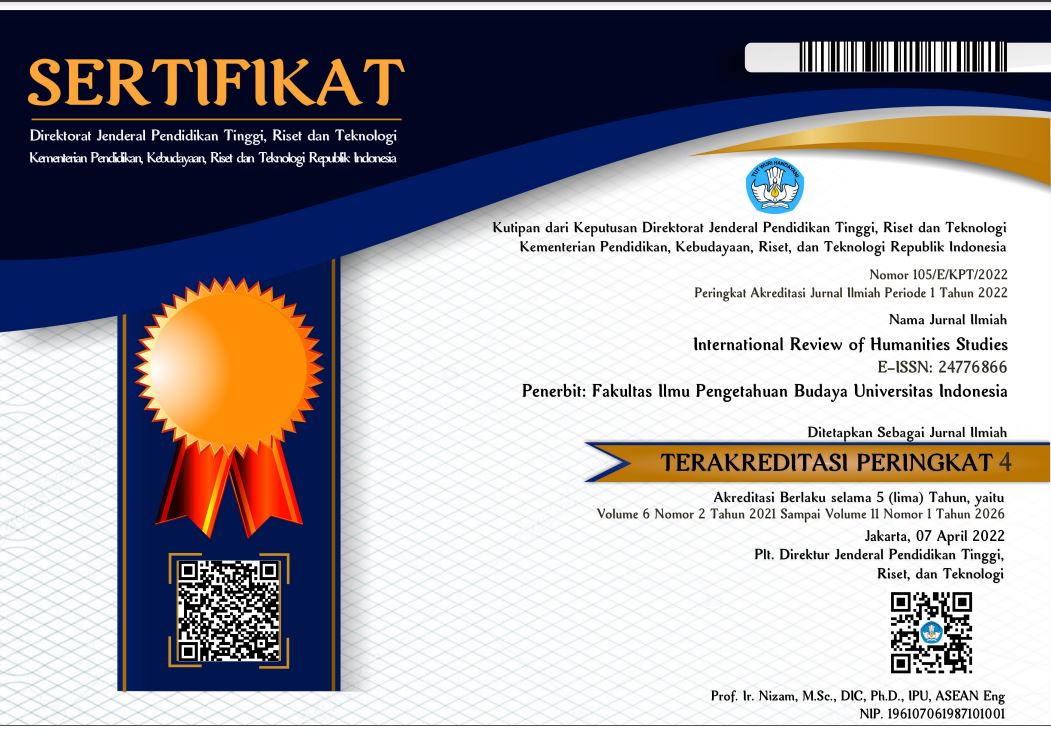International Review of Humanities Studies

Abstract
This research is a qualitative research using the phenomenological method. The research sample is women – therefore called the Rifa’iyah women – who make batik in Rifa’iyah community in the district of Batang, Central Java. Data collection techniques are applied by conducting interviews and observation guidelines. Data analysis techniques are used by using descriptive analysis. Women in the Rifa’iyah community have a prominent role to play in the productivity of batik. The Rifa’iyah people place batik not only as an economic commodity but also as a place for women in the public sphere, no longer only in the domestic area. The Rifa’iyah batik is not as popular as Pekalongan batik. It is because of the distribution of the Rifai’yah batik is exclusively moving between the Rifai’yah people and the village of Kalipucang Wetan, Batang, Central Java. The tradition of making batik in the Rifa’iyah community is carried out by the Rifa’iyah women who are santriwati1 from the Rifa’iyah Islamic boarding school. Batik with a characteristic motif of the Rifa’iyah can be sustainable until now because of the role of women in regenerating batik skills. Based on the results of the study, the data show that the Rifa’iyah women have a critical role in the development and growth of the Rifa’iyah batik as a form of collective memory that handed down from generation to generation. Moreover, the Rifa’iyah women have the role and function of the development and growth of the Rifa’iyah batik. Therefore, it is recommended to the young generation of the Rifa’iyah to always preserve the Rifa’iyah batik so that it is increasingly known by the wider scope of society.
References
Beetlestone, Florence. 2013. Creative Thingking, (translation Narulita Yusron), Bandung: Nusa Media.
Dharsono. 2007. Budaya Nusantara. Rekayasa Sains, Bandung.
Dirhamsyah, M. 2014. Pekalongan Yang (Tak) Terlupakan. Pekalongan: Perpustakaan dan Arsip Daerah Kota Pekalongan.
Djamil, Abdul. 2001. Perlawanan Kiai Desa Pemikiran dan Gerakan Islam KH.Ahmad Rifa’I Kalisalak. Yogyakarta: LKIS.
Doellah, H.Santosa. 2002. Batik, Pengaruh Zaman dan Lingkungannya. Jakarta: Danar Hadi
Idris, Mawarzi dan Justri. 2012. Batik Indonesia Soko Guru Budaya Bangsa, Jakarta: Direktorat Jenderal Industri Kecil dan Menengah. Kementerian Perindustrian
Raho, Bernard. 2016. Sosiologi, Maumere – Flores, Ledalero.
Ratna, I Nyoman Kutha, (2011). Estetika Sastra dan Budaya, Yogyakarta, Pustaka Pelajar.
Sadli, Saparinah. 2010. Berbeda Tetapi Setara Pemikiran Tentang Kajian Perempuan, Jakarta, Kompas.
Sumardjo, Yakub. 2010. Estetika Paradoks, Bandung, Sunan Ambu.
Tirta, Iwan. 2000. Batik Sebuah Lakon. Jakarta: Gaya Favorite Press.
Wulandari, Ari. 2016. Batik Nusantara, Makna Filosofis, Cara Pembuatan & Industri Batik. Yogyakarta: Andi Publisher.
Recommended Citation
Fadlia, Adlien
(2020)
"CLASSICAL BATIK TRADITION AND THE RIFA'IYAH WOMEN,"
International Review of Humanities Studies: Vol. 5:
No.
3, Article 2.
Available at:
https://scholarhub.ui.ac.id/irhs/vol5/iss3/2
Included in
Anthropology Commons, Art Education Commons, Education Law Commons, Entertainment, Arts, and Sports Law Commons, History of Art, Architecture, and Archaeology Commons, Law and Gender Commons, Law and Society Commons, Museum Studies Commons, Other Arts and Humanities Commons, Other Languages, Societies, and Cultures Commons, Social and Philosophical Foundations of Education Commons, Social Work Commons, Urban Studies and Planning Commons



